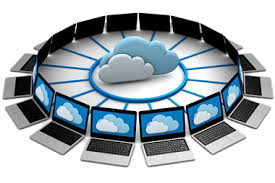What is SNMP? Why should we use it? These are all common questions people ask when deciding if its the right feature for them, the answers to these questions are simple.
Simple Network Management Protocol is an "internet-standard protocol for managing devices on IP netowrks". Devices that typically support this solution include routers, switches, servers, workstations, printers, modem racks and more.
Key functions
-
Collects data about its local environment.
-
Stores and retrieves administration information as defined in the MIB.
-
Signals an event to the manager.
-
Acts as a proxy for some non–SNMP manageable network device.
It typicaly uses, one or more administrative computers, called managers, which have the task of monitoring or managing a group of hosts/devices on a computer network.
Each SNMP Monitoring tool provides valuable insight to any network administrator who requires complete visibility into the network, and it acts as a primary component of a complete management solution information via SNMP to the manager.
The specific agents uncover data on the managed systems as variables. The protocol also permits active management tasks, such as modifying and applying a new configuration through remote modification of these variables.
Companies such as Paessler & Manage engine have been providing customers with reliable SNMP for years, and its obvious why.
Why use it?
It delivers information in a common, non-proprietary manner, making it easy for an administrator to manage devices from different vendors using the same tools and interface.
Its power is in the fact that it is a standard: one SNMP-compliant management station can communicate with agents from multiple vendors, and do so simultaneously.
Another advantage of the application is in the type of data that can be acquired. For example, when using a protocol analyzer to monitor network traffic from a switch's SPAN or mirror port, physical layer errors are invisible. This is because switches do not forward error packets to either the original destination port or to the analysis port.
However, the switch maintains a count of the discarded error frames and this counter can be retrieved via a simple network management protocol query.
Conclusion
When selecting a solution like this, choose a solution that delivers full network coverage for multi-vendor hardware networks including a console for the devices anywhere on your LAN or WAN.
If you want additional information on how we can benefit your Enterprise with our solutions click below to schedule a live one on one demo.

